Apple Scab Management, understanding the disease cycle is paramount. Implementing a strategic spray schedule with effective fungicides is crucial for orchard success. Explore diverse control and prevention strategies, including the use of resistant apple varieties and organic approaches. Delve into the significance of apple tree pruning techniques and orchard sanitation practices in preventing Venturia inaequalis.
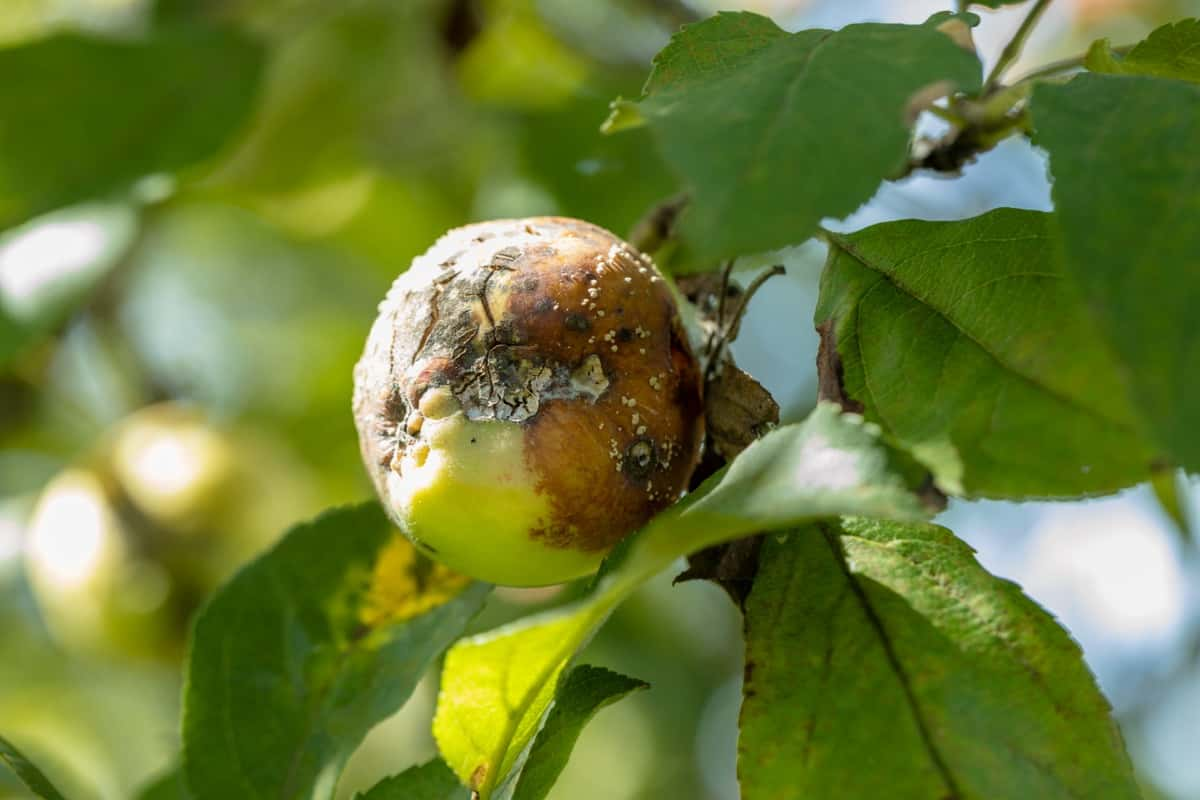
Navigate the challenges posed by fungicide resistance, emphasizing the importance of integrated pest management for apple trees. Uncover the environmental impact of apple scab and its correlation with climate change. Stay ahead with predictive models guiding biological control methods. Elevate your orchard practices for optimal results in this comprehensive guide.
Apple Scab Causes, Symptoms, and Identification
Apple scab fungal disease that affects apples, crabapples, and other plants in the same family. It is caused by fungus Venturia inaequalis, which overwinters in fallen leaves and infected twigs. The disease causes olive-green to brown spots on the upper surface of leaves, which may enlarge and become black and velvety on the lower surface. Infected leaves may become distorted, twisted, or puckered and may turn yellow and fall off prematurely.
Fruits may develop sinken, corky lesions, cracking and allowing secondary infections to enter. Infected fruits may also become deformed, stunted, or drop early. Apple scab can reduce the quality and quantity of the apple crop, weaken the tree by reducing photosynthesis and vigor, and increase its susceptibility to other diseases, pests, and environmental stresses.
Disease Cycle of Apple Scab
Apple scab disease caused by fungus Venturia inaequalis, which infects apple trees and other Malus genus members. The fungus overwinters in infected leaves and fruits, producing sexual spores in fruiting bodies called pseudothecia. These spores germinate and penetrate plant tissue, causing olive-green to brown lesions on leaves, flowers, and fruits.
The fungus then produces asexual spores (conidia) in these lesions, which can spread the infection to other parts of the tree or nearby ones. The disease cycle repeats until leaves and fruits fall off, and the fungus enters dormancy. Apple scab can reduce fruit quality, yield, and storage life, weaken the tree, and increase its susceptibility to other stresses.
The Importance of Soil Health in Preventing Apple Scab
Soil health is crucial for a productive orchard, providing essential nutrients, water, and oxygen to apple trees’ roots. It supports beneficial microorganisms that suppress soil-borne pathogens and enhances resilience to environmental stresses. Organic amendments like compost, manure, or cover crops can improve soil health and increasing organic matter content, water-holding capacity, and nutrient availability. They also enhance soil microbe diversity, which can compete with or antagonize the apple scab fungus.
Excessive tillage, compaction, or erosion can damage soil structure, reduce pore space, and expose the soil to wind and water erosion. These practices can disturb the natural balance of soil organisms and favor certain pathogens over others. By improving soil health, apple growers can prevent or reduce the severity of apple scab infections, promote resistant trees, and reduce the need for chemical inputs, which can have negative environmental and human health impacts.
The Role of Environmental Conditions in Apple Scab Development and Management
Apple scab disease that occurs in areas with high humidity and heavy rainfall, particularly during warm, wet springs. The fungus responsible for the disease, Venturia inaequalis, overwinters in diseased leaves on the ground and produces spores that germinate on wet surfaces at 70 degrees Fahrenheit. This cycle can repeat multiple times in the growing season. Environmental conditions significantly impact apple scab development and management.
In case you missed it: Top 20 Apple Varieties in India: List of Apple Varieties to Grow for High Profits
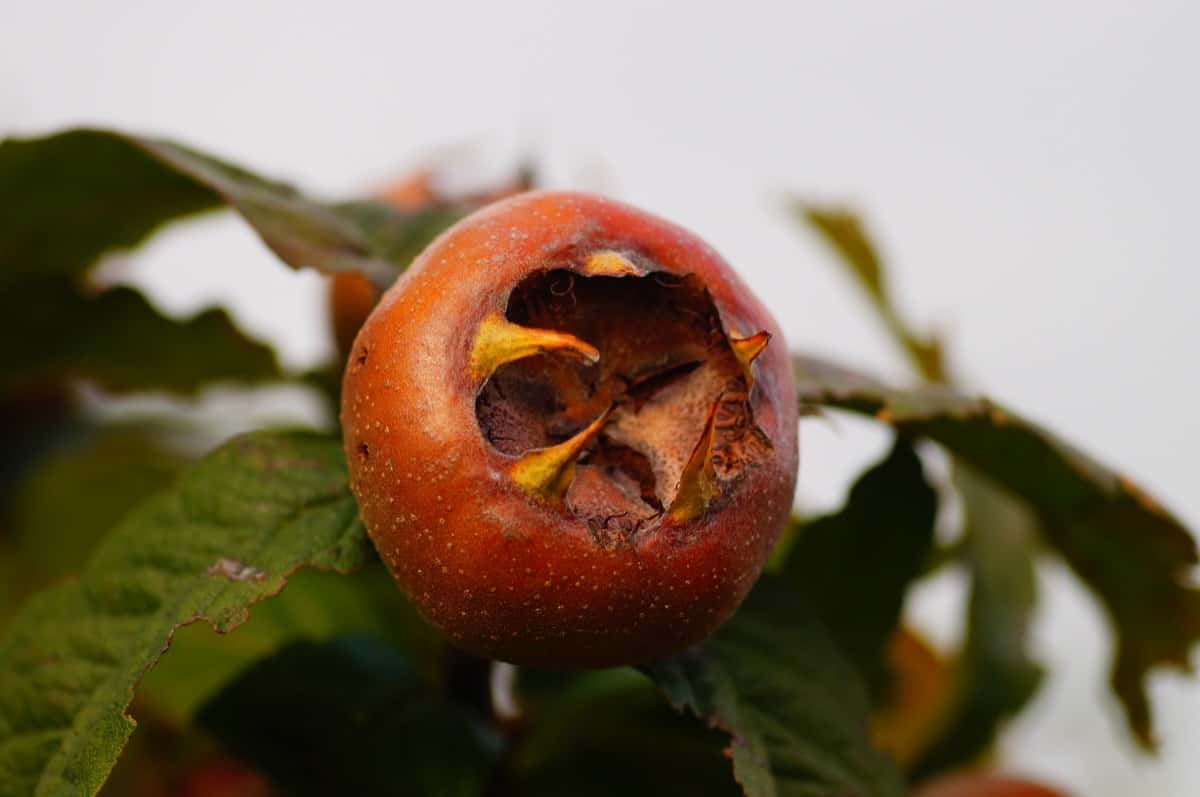
By monitoring weather conditions and using disease forecasting models, growers can predict when scab infections are likely to occur and apply preventive measures. These include choosing scab-resistant varieties of apple or crabapple trees, regularly raking up and discarding fallen leaves or fruit, pruning trees to keep crowns open, avoiding overhead irrigation or early watering, spraying fungicides on emerging leaves and fruit, and rotating fungicides and different modes of action to avoid resistance development.
Top Fungicides for Battling Apple Scab
Apple scab disease that can be prevented and controlled using various fungicides. Captan is a broad-spectrum fungicide that can prevent and control apple scab and other fungal diseases. It is low toxicity to mammals and birds but may be harmful to fish and aquatic organisms. It should not be mixed with oil or applied within four days of an oil spray.
Chlorothalonil is another broad-spectrum fungicide that can prevent apple scab but may be toxic to fish and aquatic organisms. Myclobutanil is a systemic fungicide that can prevent and control apple scab but may be toxic to fish and aquatic organisms.
Integrating Cultural Practices With Chemical Control for Apple Scab Management
Apple scab is a severe disease that can significantly impact the quality and yield of apple crops. Chemical control, including fungicide applications, is often necessary to prevent or control apple scab infections. However, more than chemical control is required for effective management, as it may have negative environmental and human health impacts. Therefore, it is recommended to integrate cultural practices with chemical control for apple scab management.
Cultural practices include choosing scab-resistant varieties of apple or crabapple trees, regularly raking up and discarding fallen leaves or fruit, pruning trees to keep their crowns open, avoiding overhead irrigation or watering early in the day, planting in full sun and spacing trees adequately, and using organic amendments like compost, manure, or cover crops to improve soil health and suppress pathogens.
By integrating cultural practices with chemical control, apple growers can achieve more effective and sustainable apple scab management. These practices can reduce inoculum pressure, infection rate, and disease severity, enhance the efficacy and longevity of chemical control, and improve the overall health and productivity of apple trees by providing optimal growing conditions.
Timing and Techniques: Maximizing Efficacy of Apple Scab Sprays
Apple scab sprays are crucial for managing the disease, but their effectiveness depends on the timing and techniques used. To maximize the efficacy of these sprays, growers should follow these guidelines:
Start spraying before infection occurs: The best time to spray fungicides for apple scab prevention is before spores germinate and infect plant tissues, usually during the green tip stage of bud development. This helps protect emerging leaves and flowers from primary infections.
Spray at regular intervals: The interval between sprays depends on weather conditions, disease pressure, and the type of fungicide used. Generally, sprays should be applied every seven to 10 days during periods of high infection risk, such as warm, wet weather in spring.
Use adequate spray volume and coverage: The spray volume should be sufficient to wet all parts of the tree without causing runoff or dripping, and the spray coverage should be uniform and thorough, especially on the lower and inner parts of the canopy where infection often starts.
Rotate fungicides and modes of action: Fungicides with different modes of action have different mechanisms of killing or inhibiting the fungus that causes apple scab. Rotating fungicides with different modes of action can prevent or delay resistance development by exposing the fungus to different types of stress, which can reduce the efficacy of fungicides and make them ineffective against apple scab.
Resistant Apple Varieties and Apple Scab Management
One of the best ways to prevent apple scab is to plant apple varieties that are resistant to the disease. Resistant varieties have genes that make them less susceptible to infection by the fungus Venturia inaequalis, which causes apple scab. Resistant varieties may still show some symptoms of apple scab, but they are usually minor and do not affect the quality or yield of the fruit. Some examples of resistant apple varieties are Enterprise, Freedom, GoldRush, Liberty, Prima, Priscilla, Redfree, and Williams’ Pride.
In case you missed it: Fertilizer Application Rate Per Acre: Exploring Different Crop Fertilizer Application Rates
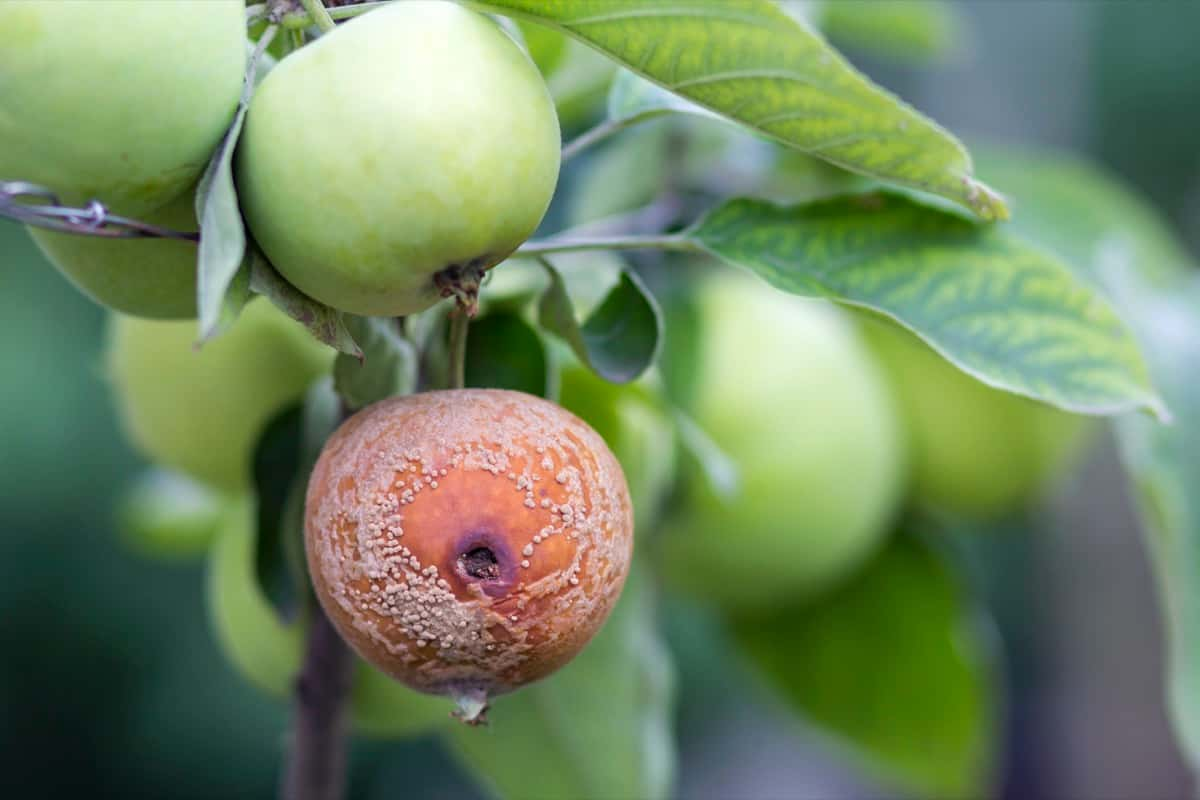
Organic Approaches to Apple Scab Management
Organic apple growers can use several cultural and biological methods to reduce the incidence and severity of apple scab. These include:
- Removing fallen leaves and pruning infected branches to reduce the source of fungal spores that overwinter in the orchard.
- Applying organic mulches or composts to the soil promotes beneficial microorganisms that can compete with or antagonize the apple scab fungus.
- Planting diverse cover crops or intercrops that can attract natural enemies of the apple scab fungus, such as predatory mites, insects, and birds.
- Spraying organic fungicides, such as copper, sulfur, lime sulfur, or biological agents, such as Bacillus subtilis or Trichoderma harzianum, to prevent or suppress apple scab infection. These fungicides should be applied before or during rainy periods when the risk of infection is high.
Early Detection Techniques for Effective Apple Scab Control
Early detection of apple scab infection is important for timely and effective control measures. Some techniques that can help growers monitor and diagnose apple scab are:
- Using weather stations or models to predict when the environmental conditions are favorable for apple scab infection, such as temperature, humidity, rainfall, and leaf wetness.
- Using disease forecasting systems, such as RIMpro or Mills table, to estimate when the primary and secondary infection periods occur and when fungicide applications are needed.
- Using molecular tools, such as PCR or LAMP, to detect the presence of apple scab DNA in plant samples or spore traps. These tools can provide rapid and accurate results, but they require specialized equipment and skills.
- Using visual symptoms, such as olive-green to black spots on leaves and fruit, to confirm apple scab infection. However, visual symptoms may only appear several days after infection and may be confused with other diseases or disorders. Therefore, visual diagnosis should be combined with other techniques for more reliable results.
Optimal Spray Schedule for Apple Scab Prevention
| Spray Timing | Fungicide Type | Fungicide Example |
| Green tip | Protective | Copper |
| Tight cluster | Protective | Sulfur |
| Pink | Protective | Lime sulfur |
| Bloom | Protective | Bacillus subtilis |
| Petal fall | Protective | Trichoderma harzianum |
| First cover | Curative | Myclobutanil |
| Second cover | Curative | Difenoconazole |
| Third cover | Curative | Pyraclostrobin |
In case you missed it: Best Fertilizer for Tinda: Organic, Natural, Homemade, NPK Ratio, When and How to Apply
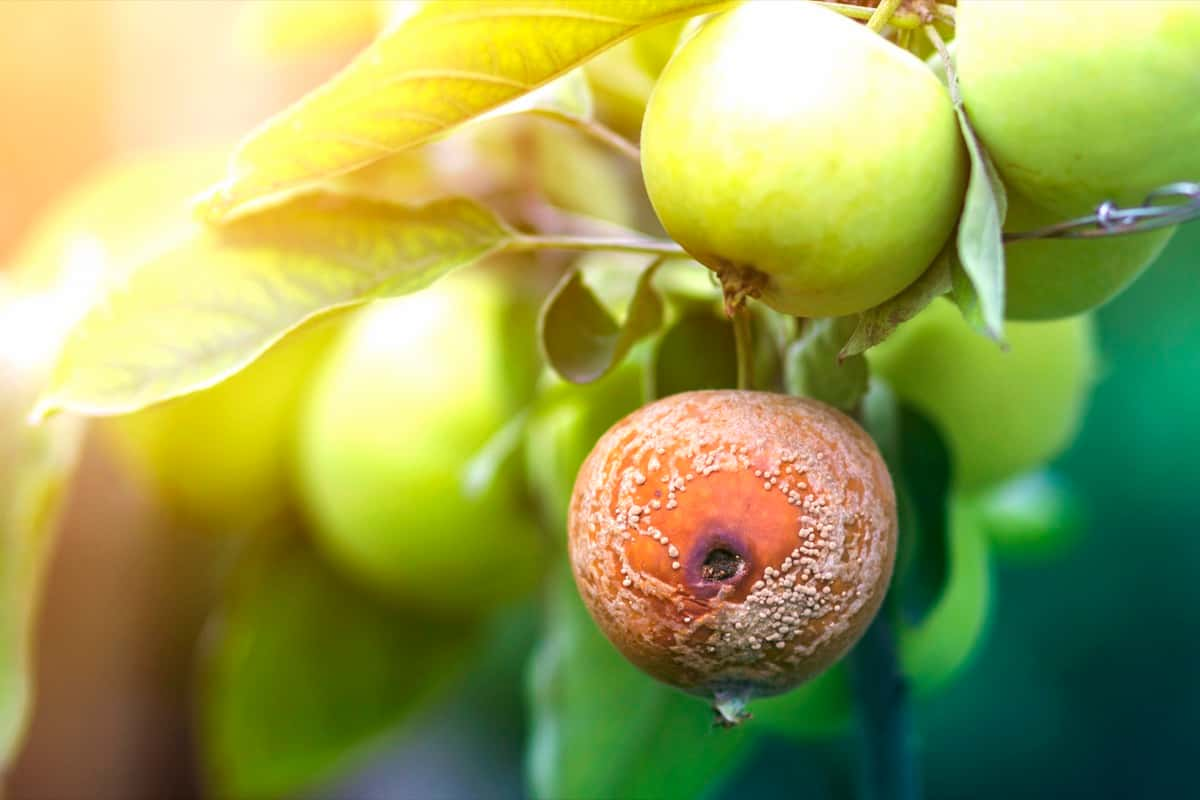
Cost-effective Strategies for Managing Apple Scab in Orchards
Managing apple scabs in orchards can be costly due to the need for frequent fungicide applications and labor inputs. However, some strategies can help growers reduce the cost of apple scab management without compromising disease control. These include:
- Adopting integrated pest management (IPM) principles that combine cultural, biological, and chemical methods to manage apple scabs holistically and sustainably.
- Using precision agriculture technologies, like sensors, drones, or robots, to monitor disease development and apply fungicides more efficiently and accurately.
- Implementing decision support systems, such as web-based or mobile applications, that provide growers with real-time information and recommendations on apple scab management based on weather data, disease models, and fungicide efficacy.
- Participating in cooperative or collective actions, such as sharing equipment, resources, or information with other growers or stakeholders to reduce the cost and increase the effectiveness of apple scab management.
In case you missed it: Best Fertilizer Jamun Tree: Organic, Natural, Homemade, Npk Ratio, When and How to Apply
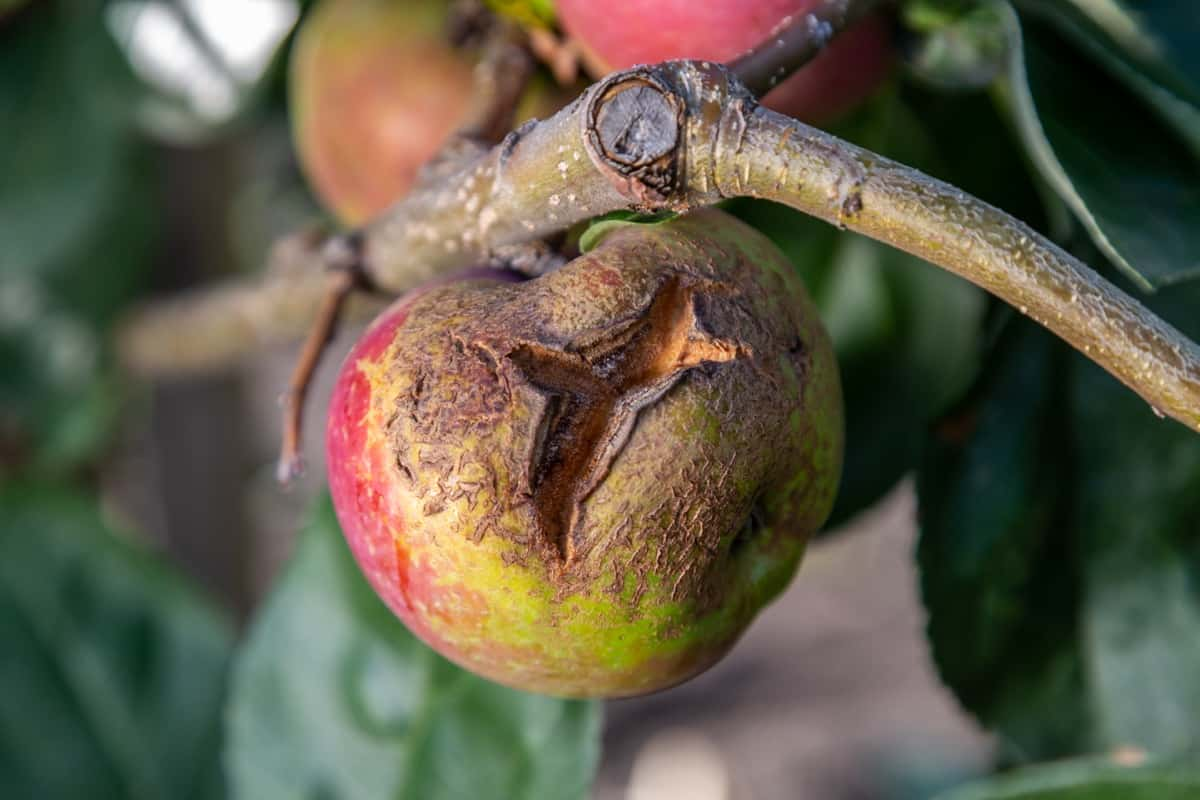
Homemade Remedies for Apple Scab Control and Prevention
- Baking soda: Dissolve one spoon of baking soda and one teaspoon of vegetable oil in one gallon of water. Spray the solution on the leaves and fruit of apple trees every 7 to 10 days during the growing season. Baking soda can raise pH of the plant surface and inhibit fungal growth.
- Vinegar: Mix one cup of vinegar, one gallon of water. Spray the solution on the leaves and fruit of apple trees every 7 to 10 days during the growing season. Vinegar can lower the pH of the plant surface and create an unfavorable environment for fungal spores.
- Garlic Spray: Garlic can act as a natural fungicide and repellent for fungal spores.
- Crush ten cloves of garlic and soak them in one pint of water for 24 hours.
- Strain the liquid and add one tablespoon of liquid soap.
- Dilute the solution with one gallon of water.
- Spray the solution on the leaves and fruit of apple trees every 7 to 10 days during the growing season.
The Science Behind Apple Scab: Pathogen Biology and Management Strategies
Apple scab disease caused by a fungus called Venturia inaequalis, which has a complex life cycle involving sexual, asexual reproduction. The sexual stage occurs in winter, producing pseudothecia in fallen leaves of infected trees, which contain asci that produce ascospores. These ascospores are released in spring and germinate and infect young leaves and fruit.
The asexual stage occurs in summer, producing conidia in lesions on infected leaves and fruit. These conidia germinate and cause secondary infections and can overwinter in buds or twigs, initiating infections in the next spring. Management strategies for apple scab involve understanding the pathogen’s biology, epidemiology, host susceptibility, and environmental factors.
The main goals are to reduce inoculum sources, prevent infection events, and protect plant health. Common strategies include planting resistant varieties, removing fallen leaves and pruning infected branches, applying fungicides or biocontrol agents, monitoring weather conditions, and implementing cultural practices to improve air circulation, light penetration, and plant vigor in the orchard.
In case you missed it: Best Fertilizer for Bitter Gourd: Organic, Natural, Homemade, NPK Ratio, When and How to Apply
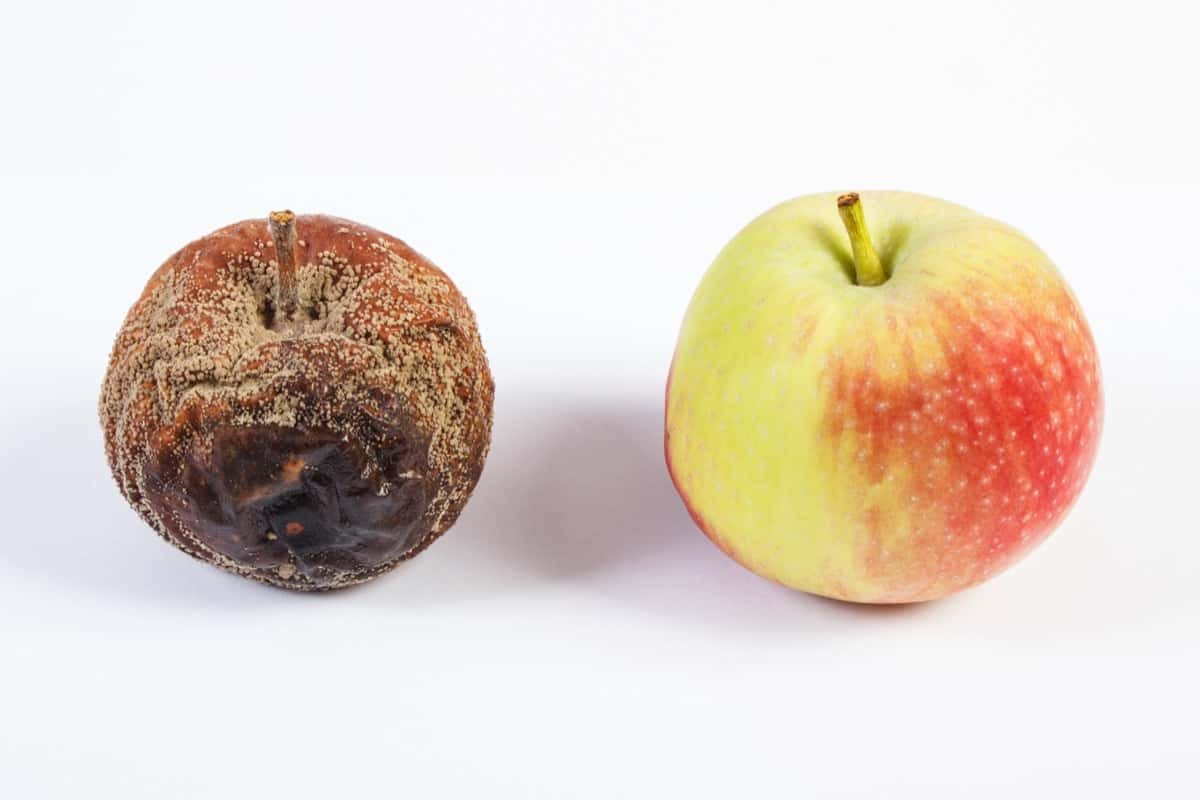
Conclusion
Effective Apple Scab Management demands a nuanced understanding of the disease cycle, coupled with a meticulous spray schedule incorporating diverse fungicides. Integrating control and prevention strategies, from resistant varieties to organic practices, is key for orchards to thrive and combat the challenges posed by Venturia inaequalis.
- Types of Pesticides Used in Agriculture: A Beginner’s Guide
- Economical Aquaculture: A Guide to Low-Budget Fish Farming
- 15 Common Planting Errors That Can Doom Your Fruit Trees
- How to Make Houseplants Bushy: Effective Tips and Ideas
- Innovative Strategies for Boosting Coconut Pollination and Yield
- Pollination Strategies for Maximum Pumpkin Yield
- The Complete Guide to Chicken Fattening: Strategies for Maximum Growth
- Natural Solutions for Tulip Problems: 100% Effective Remedies for Leaf and Bulb-Related Issues
- Revolutionizing Citrus Preservation: Towards a Healthier, Greener Future
- Natural Solutions for Peony Leaf and Flower Problems: 100% Effective Remedies
- Maximizing Profits with Avocado Contract Farming in India: A Comprehensive Guide
- Natural Solutions for Hydrangea Problems: 100% Effective Remedies for Leaf and Flowers
- The Ultimate Guide to Choosing the Perfect Foliage Friend: Bringing Life Indoors
- From Sunlight to Sustainability: 15 Ways to Use Solar Technology in Agriculture
- The Ultimate Guide to Dong Tao Chicken: Exploring from History to Raising
- The Eco-Friendly Makeover: How to Convert Your Unused Swimming Pool into a Fish Pond
- Mastering the Art of Delaware Chicken Farming: Essentials for Healthy Backyard Flocks
- 20 Best Homemade Fertilizers for Money Plant: DIY Recipes and Application Methods
- How to Craft a Comprehensive Free-Range Chicken Farming Business Plan
- Brighten Your Flock: Raising Easter Egger Chickens for Beauty and Bounty
- How to Optimize Your Poultry Egg Farm Business Plan with These Strategies
- Subsidy for Spirulina Cultivation: How Indian Government Schemes Encouraging Spirulina Farmers
- Ultimate Guide to Raising Dominique Chickens: Breeding, Feeding, Egg-Production, and Care
- Mastering the Art of Raising Jersey Giant Chickens: Care, Feeding, and More
- Ultimate Guide to Raising Legbar Chickens: Breeding, Farming Practices, Diet, Egg-Production
- How to Raise Welsummer Chickens: A Comprehensive Guide for Beginners
- How to Protect Indoor Plants in Winter: A Comprehensive Guide
- Ultimate Guide to Grow Bag Gardening: Tips, Tricks, and Planting Ideas for Urban Gardeners
- Guide to Lotus Cultivation: How to Propagate, Plant, Grow, Care, Cost, and Profit
- Agriculture Drone Subsidy Scheme: Government Kisan Subsidy, License, and How to Apply Online
- Ultimate Guide to Raising Araucana Chickens: Breed Profile, Farming Economics, Diet, and Care
- Bringing Hydroponics to Classroom: Importance, Benefits of Learning for School Students
- Ultimate Guide to Raising Polish Chickens: Breed Profile, Farming Economics, Diet, and Care
- Ultimate Guide to Raising Australorp Chickens: Profile, Farming Economics, Egg Production, Diet, and Care
- Silkie Chicken Farming: Raising Practices, Varieties, Egg Production, Diet, and Care
- Sussex Chicken Farming: Raising Practices, Varieties, Egg Production, Diet and Care